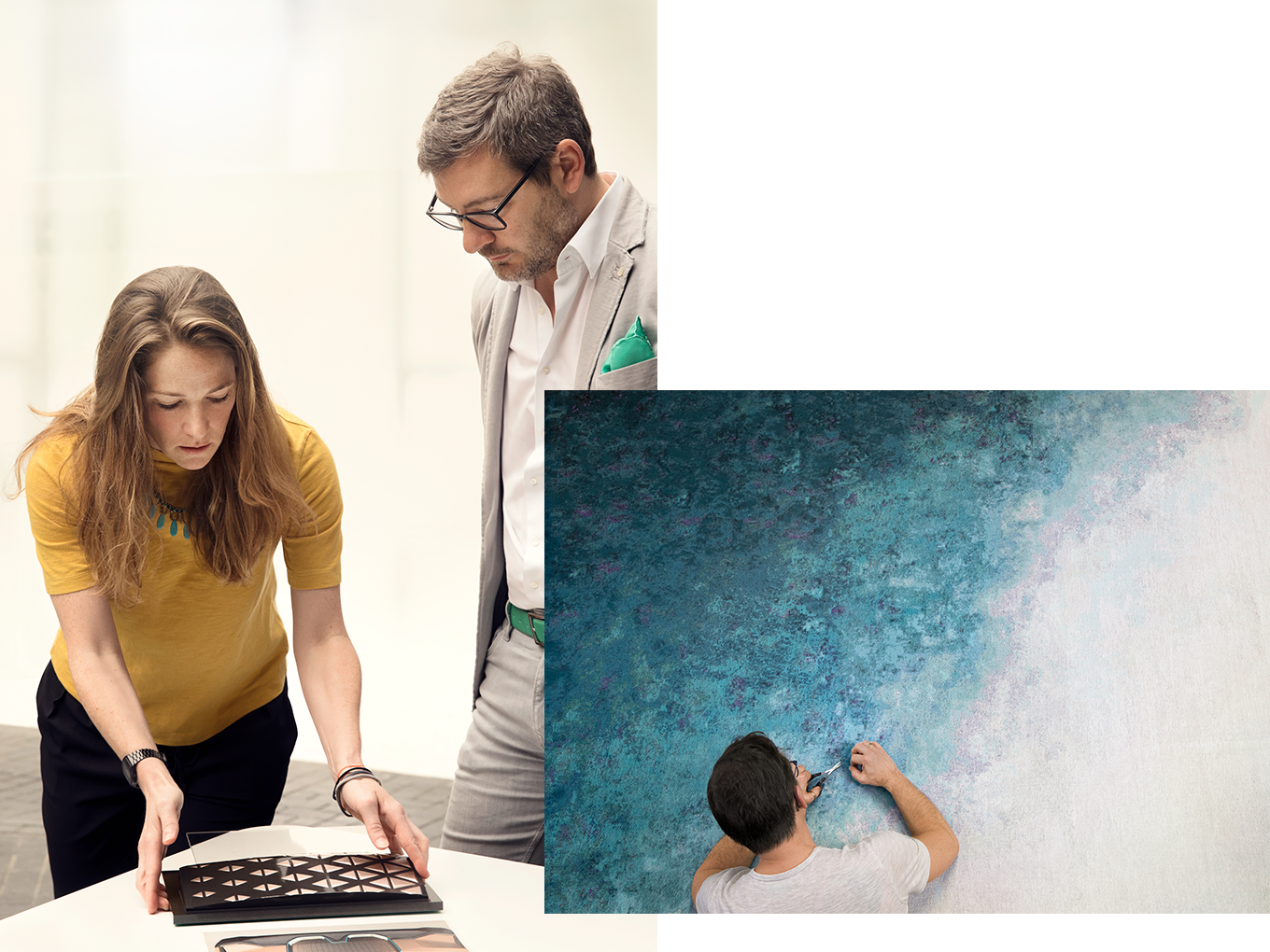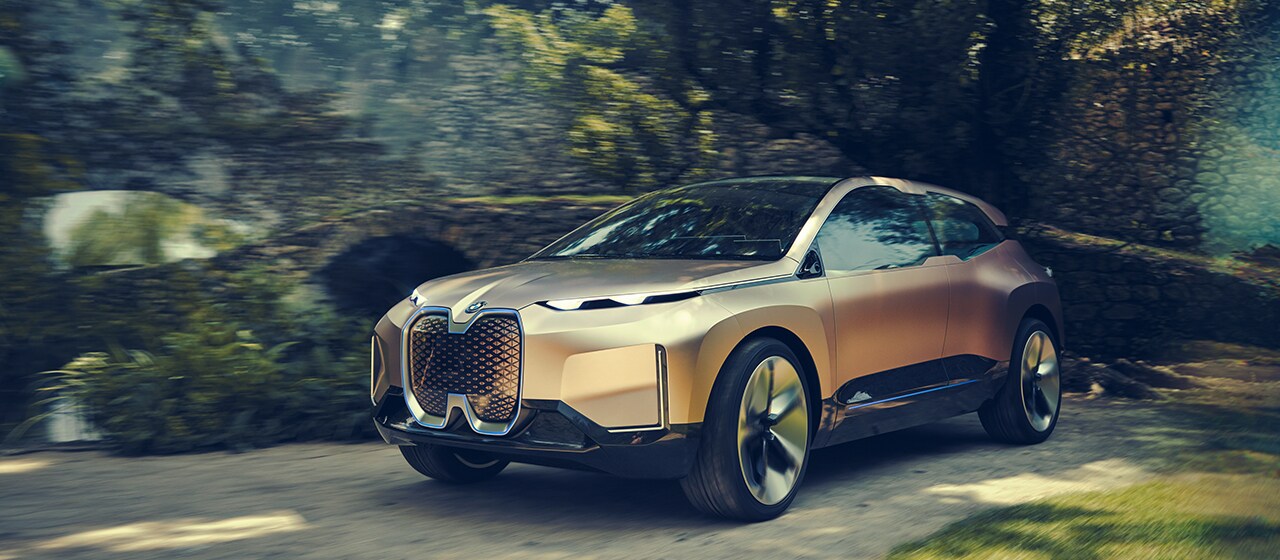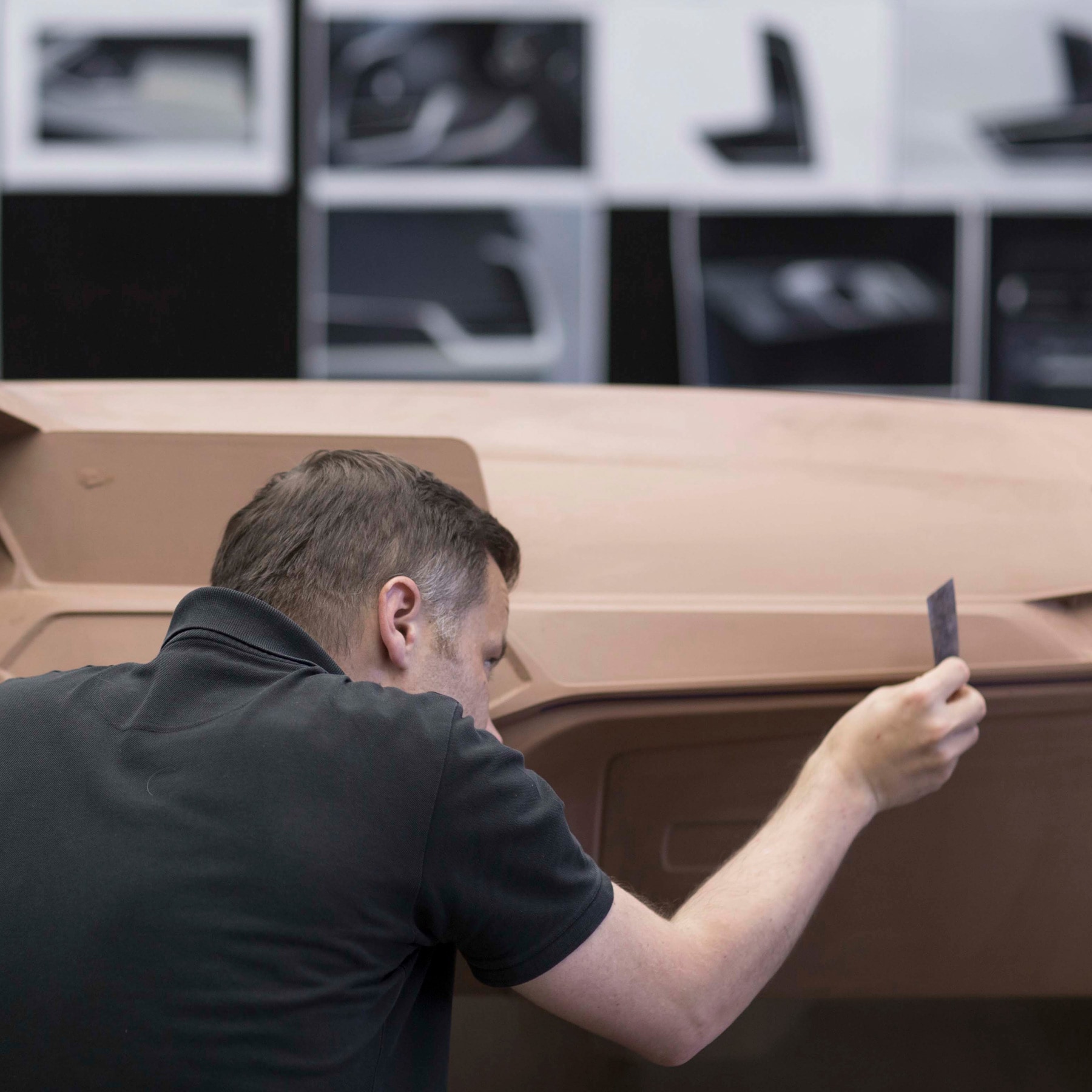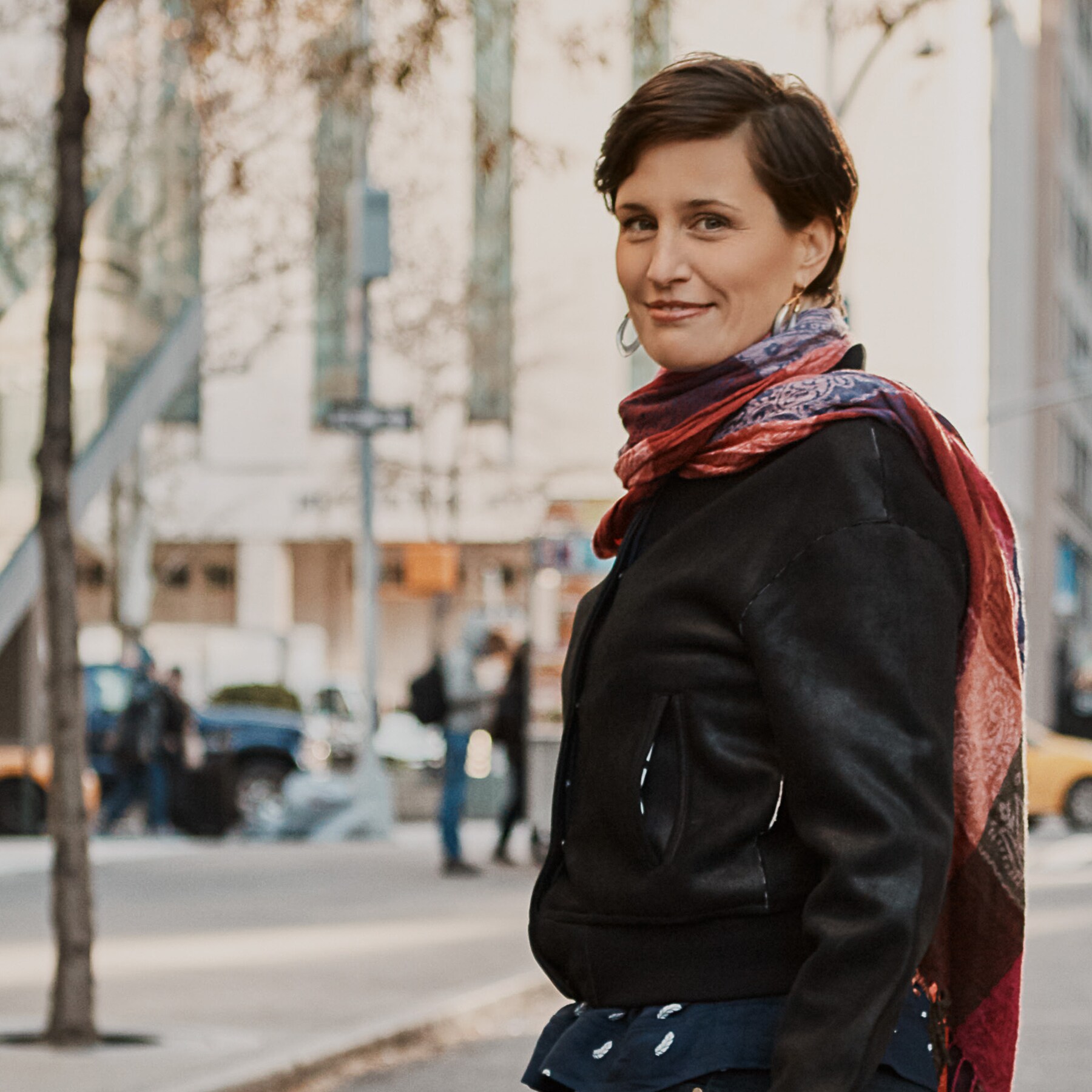We all look for a place where we feel completely at ease. Safe and secure. Where we can relax. Where stress simply melts away. Where we can be completely ourselves. But also a place we want to share with those dear to us.
How does this sound?
You can also listen to this article via Changing Lanes, the official BMW podcast. Apart from this and other narrated articles, Changing Lanes offers you fresh new episodes every week, packed with exclusive insights on tech, lifestyle, design, cars, and more – brought to you by hosts Sara and Jonathan. Find and subscribe to Changing Lanes on all major podcasting platforms.

Give hygge a try
The sense of longing for a favorite place – it seems stronger today than ever before. Trend researchers have already given the retreat into private, protected spaces many different names. “Cocooning,” for example, when one hides away within one's own four walls. Or "homing", convivial gatherings in private spaces. And today? Today, the entire world yearns for "hygge."
This Danish term describes a lifestyle anchored in Scandinavian everyday culture. It refers to enjoying time alone, with friends or with family in a pleasant atmosphere. Hygge triggers feelings of well-being and relaxation.
In English, the term "coziness" comes close to this meaning. People can get together for a cozy gathering among friends. But the word also has a strong spatial component. An apartment can be cozy, as can a bar. So what makes a place cozy and hyggly?


Design for all the senses
The Korean designer Jinsop Lee has established the theory of 5-sense design. According to this theory, good design not only looks good. It sounds, smells, and feels good too. Hygge and coziness for all the senses, so to speak. Our favorite place would therefore be somewhere that makes us happy in as many of these five categories as possible. Let's try it out!
A sense for coziness: vision
A sense for coziness: vision
Most of the information that we perceive from our environment is visual in nature. We see colors, shapes, dimensions, and light. All these may be created naturally, like a brook flowing through a meadow. Or it may be arranged by human hands, such as a cozy room in an old farmhouse.
As far as colors go, there are cultural differences. For example, whereas in Western countries the color of mourning is black, in China it is white. And yet psychology knows the colors that tend to give us a sense of well-being and which interior design makes us happy.
Colors and design
Across all borders, blue is the most frequent favorite color. Blue soothes and stands for the expanse of the sky. Natural colors in general have a high feel-good factor in interior design. Brown tones radiate an earthy coziness. Green has a balancing effect, but also stands for freshness and vibrancy.
It is more difficult to determine the perfect dimensions of a room. The caveman in us likes protected, smaller rooms. How firmly we are still anchored in the Stone Age is evident in the places we intuitively gravitate towards in rooms: We like to sit where we have a view of the entrances and exits. And we also usually place our beds opposite to the room door. This behavior is based on an instinct that has been in our genes for tens of thousands of years: the instinct to always be wary of potential dangers, to always be ready to flee or fight.
Our visual sense thus not only decides what our favorite place should look like. It also unconsciously tells us where we want to be located in a room in order to feel hyggly and cozy.
Can you hear hygge?
After the eyes, the ears are the second most important sense organ in spatial perception. An aural sense of well-being develops in particular from the sounds of nature. These stimulate regions of the brain that are especially active in relaxation. The chirping of birds and the babbling of a brook have proven to aid in stress reduction.
But how do we respond acoustically to an enclosed space? Does it sound cool, with long reverberation? This is especially the case in large and empty rooms. Or do curtains and carpets absorb the high frequencies? That sounds cozier, but often also dull. A good interior decorator already considers such acoustic factors when planning the interior design of a room.
Relaxing music
We are often unaware of the effect that sounds have on our sense of well-being. And yet we can easily counteract this. For example: with recorded white noise, which reminds many people of a waterfall and drowns out sources of disturbing noise – like a sort of antidote. Or with music: British neuroscientists have identified the most relaxing song in existence. The composition "Weightless" reduces the stress level of the listener by 65 percent. The researchers even warn: The piece has such a sleep-inducing effect, that it should never be listened to while driving.
Tactile appeal
Our hand glides over a polished slab of stone – and then over a fluffy pillow. We all know these feelings. They trigger a wide variety of associations in seconds: from cool elegance to the coziness of a cuddly sofa.
The importance of the sense of touch for a sensuous design is not always easy to grasp. But the most pleasant and most peaceful place must also feel good to us in order to be a hyggly favorite place. This not only includes the sensations made on the fingertips. The sense of touch also judges whether we are sitting on a hard or soft seat. This way, a total impression of the surfaces and structures of our environment forms in our subconscious.
And as with seeing and hearing, here too nature delivers the blueprint for a feel-good place. Nature is full of stimuli for our sense of touch. Surfaces are alternately round and square, soft and hard, cool and warm, rough and smooth. Designers carry over this natural wealth of stimuli to our everyday living environment, whether with furniture or in cars.
Us designers, we've mainly focused on making things look very pretty, and a little bit of touch. What if we started using the five senses theory in all of our designs?
The joy of smelling
We enter a room and feel suddenly transported to the past. This aroma of freshly baked cookies – just like back then in grandma's kitchen.
Such reminiscences of our past life are referred to as episodic memory. Our sense of smell has a direct link to memories and emotions – more direct than with any other sensory perceptions. And the feelings triggered by smells are accordingly strong. Especially when they remind us of our childhood. Vanilla, for example, gives many people a feeling of being cozy and safe.
Just as we can look around our favorite place, we can also consciously "sniff around" there. And then we frequently make the observation: Our favorite place is one with a smell that evokes good memories from our past life.
A matter of taste
Can a favorite place have a taste? That may sound far-fetched at first. But the taste of salty ocean air awakens holiday feelings. And when we walk into our favorite café, our mouths already start to water at the door. This is because the sense of well-being from good food and drink is transferred unconsciously to the room.
A favorite place is thus not only a matter of taste. The love of a place can actually go through your stomach.


The car is becoming a feel-good space

How we perceive spaces is a question addressed not only by scientists and architects. Car designers are also placing increasing value on an interior that appeals to all the senses. "The car is becoming a feel-good space," says Domagoj Dukec, Head of Design BMW Automobiles. In an interview, he explains his vision of a moving favorite place.

How do you interpret your individual sensation when you have a sense of well-being in a room? What major factors contribute to this feeling?
I would describe my individual sensation with the word "happy". A room in which I feel at home must give me the feeling that I can let myself go and be free. I am very happy on my patio, where I have a view of nature. Being able to work creatively every day has always been my dream. But it can also be highly exhausting at times, as you have to give a lot of yourself as a person and engage yourself on a highly emotional level. That's why it's important to me to have a refuge where I can recharge my batteries and find new inspiration at the same time. In this regard, it's less of a question of what are the contributing factors and more one of whether the place allows me to reconnect with myself. I would put it like Aristotle: “The whole in this case is always more than the sum of its parts.”

In your opinion, how do the 5 senses interact to create the feeling of a room as a "favorite space"?
Our senses are something very emotional. They give you a feeling within milliseconds before you have the chance to grasp the situation rationally. I believe that everyone has experienced situations of entering a room and feeling immediately at ease or not at ease. This feeling is immediately present. A place or room in which I experience well-being must therefore act harmoniously on all the senses of perception on a very high level. This is also the reason why we take all the senses into account in a new vehicle project already during the design process, because they are crucial for the first impression and have a major influence on the specific design.

Will the car interior take on greater importance in the future compared to today? If yes: Are the reasons for this merely technical, for example autonomous driving, or do social trends like cocooning also play a role?
They certainly do. The automobile in itself will go though much greater changes over the next 20 years than in the last 100 years – and this will affect the interior in particular. Technology and society are mutually dependent in this respect. As far as technology goes, we see four decisive drivers of future mobility: Automated, Connected, Electrified, and Services. We call it "ACES". These new fields of innovation allow us to completely rethink the interior of a vehicle.
How exactly do you see the mutual dependence of technology and society? Can you perhaps name an example of the influence social trends have on the development of technology?
For us, the focus is on human beings with their emotions and needs. We are observing that society is increasingly interested in intelligent and integrated solutions that make life easier. New technologies make these solutions possible. We as Designers have the task of integrating this technology into the vehicle design in such a way that it can be experienced by the senses. In our new vision vehicle, the BMW Vision iNEXT, we have realized this objective using Shy Tech. Besides the displays in the driver's area, no other displays or buttons are visible in the BMW Vision iNEXT. Instead, the surfaces are intelligent. Under the jacquard fabric and the perforated wood, a virtually invisible technology allows for operation. The technology retreats deliberately into the background and only becomes visible and operable when required. Music is played by drawing a note. Very simple and intuitive.

Can traditional teachings such as feng shui also be applied to cars? Or is that too far-fetched?
The doctrine of feng shui and moving objects are mutually contradictory. "Ba zhai" describes a method which places great importance on geographic orientation. More important than the principles and methods of feng shui is the result that is achieved. This is about the feeling of being in harmony with the environment. And this feeling can certainly be attributed to a car.

Many people define a feel-good place as "like being at home". Can this feeling be attributed to a car?
An autonomously driving car harbors entirely new possibilities. It's about getting more time to live life. With the BMW Vision iNEXT, we are deliberately breaking away from familiar dogmas and showing a new interpretation of mobility - a very human interpretation. For this purpose, we conceived the interior as a boutique hotel, a place of well-being. It has a purposely open design and allows for dialog. Each object was designed as an individual piece of furniture. We integrated a coffee table into the BMW Vision iNEXT whose materials and colors make it seem like it's floating over the center console. The fine wooden panel lies on a frame of precious illuminated crystal glass held by a delicate, bronze-colored stand. The facet cut of the crystal class causes the light to be reflected, refracted, and split up into multiple colors. And there are many details that you only discover at second or third glance. So can this feeling be attributed to a car? Definitely. This is what the BMW Vision iNEXT is designed to do.






